경기문화재단
Manfred Pernice, Adventure of Ideas
Gyeonggi Museum of Modern art
This catalogue is published in conjunction with 2017-2018 Korea–Germany Contemporary Art Exchange Exhibition Irony & Idealism. It documents all exhibitions and artworks at 3 venues in Korea and Germany-Gyeonggi Museum of Modern Art, KF Gallery and Kunsthalle Münster-from September 2017 until September 2018.
|
Jeong Ka Hee Curator, Koreanisches Kulturzentrum
Artist & Artwork - Manfred Pernice
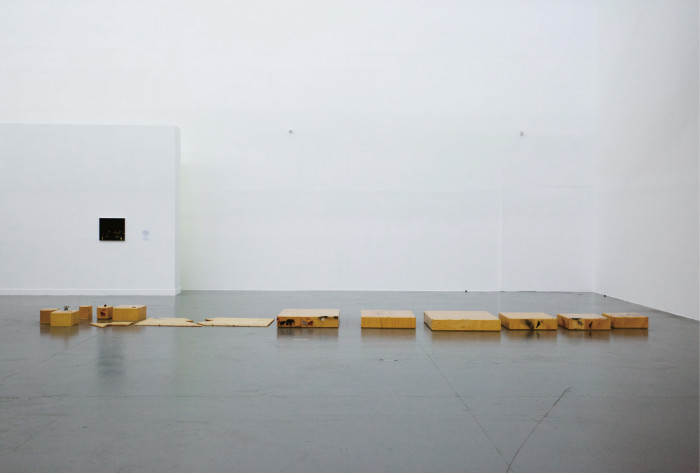
Progress
III
Under the inf luence of technological and social development, environmental change, and globalization, the borders of nation states and cultures are blurring. Recent developments such as in the rapidity and frequency of communication are making it difficult to define the borders between diverse genres of contemporary art and between art and daily life, which in turn deconstructs these interspaces. Manfred Pernice, one of the most prominent artists who counters current tendencies, demonstrates not simply a starting or ending point, but the process— the interspaces—through his art. Pernice majored in sculpture and is currently working in Berlin, where he investigates the complicated relationships between art and architecture, cities and cultures, and time/space and micro-histories. What does he deliver to viewers through his work’s fragmented and incomplete, silent form?
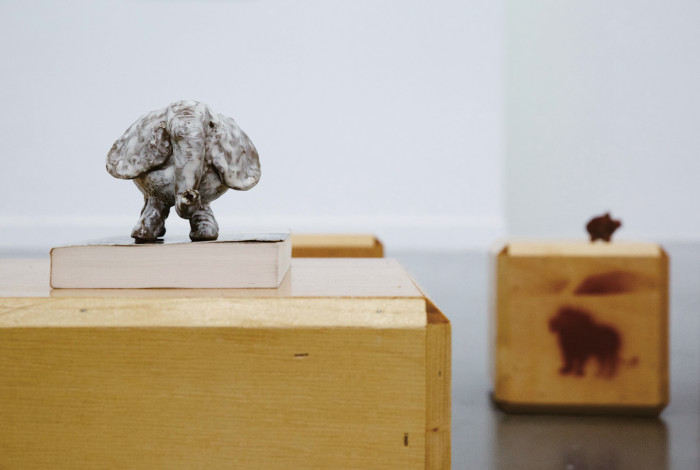
Progress III
For his projects, Pernice employs construction materials such as plywood, particle board, and dimensional lumber in place of more traditional art media. By cutting, rejoining, drawing, or coloring on those materials, he reorganizes the visual language embeded within them and constructs his own narratives. Artificial products such as chairs for sitting or books for reading are all produced based on human needs and intentions. Without any external influences, such unnatural products for specific human purposes cannot transform their essense or take on different form by themselves. Here, Pernice assumes a creator’s role to reverse a preexisting style and structure for development. What he does is more than simply making a complete piece of sculpture— he focuses on the loophole in reality which is revealed after an object loses its original function.

Progress
III
The artist’s practices mean reopening closed spaces like the past or redrawing ignored and neglected stories. A nearly incomplete project reveals all of the traces of his anguish and hesitancy while creating a sense of an unfinished architectural space or a studio. If such a project were displayed on the street or in a vacant lot rather than in a gallery space, we may not have been able to perceive it as a work of art. In particular, Pernice’s Progress III (2012) is such a case. Introduced in Irony & Idealism, a contemporary art exchange exhibition between South Korea and Germany, Progress III is, as its title indicates, currently a work in progress. On the first encounter the project might feel unfarmiliar; a work whose border between its starting and ending points is blurry.
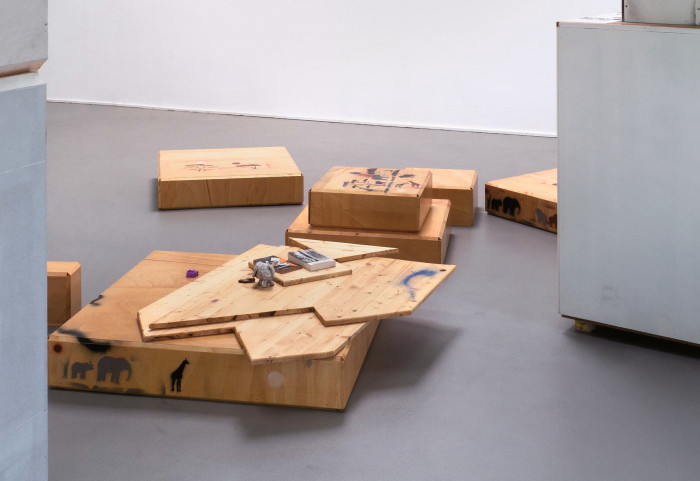
Human beings are incapable of escaping the passage of time. We will eventually disappear after following our destiny of birth and death, which leads us to consider time to be linear. However, time becomes flexible in Pernice’s work, in which the structure of time and space is organized in three dimensions. As he shows in this exhibition, he often utilizes the structure of empty boxes, which alludes to the conception that the boxes are seemingly filled with something. The artist’s compressed ideas within the boxes are extended via the exhibition. Furthermore, his visual language connects the past with the present. We feel uneasy with something imperfect or out of order because contemporary society tends to depend on accurate language and detailed knowledge in order to understand our world in greater depth. However, it is unfamiliarity that develops our thoughts

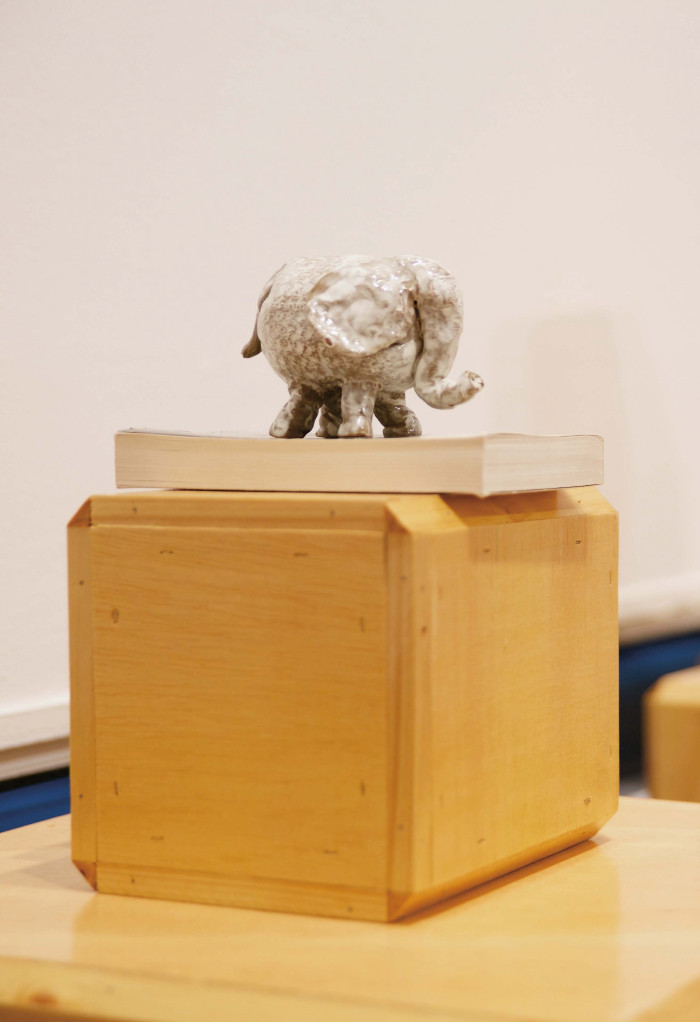
Pernice’s project requires patience on the part of viewers. In order to see how the artist constructs his ideas through his projects, we have to spend time tracing the traces that he left. After breaking the habit of quickly accepting information and using it to interpret an incident, we have to restore ourselves to the attitude of an adventurer undertaking a journey. It is the elephant model that draws our attention when we first encounter Pernice’s Progress III (2012) whether in Korea or Germany. Then, naturally, a Georges Simenon novel is found under the elephant. The novel provides a clue that the starting point of our journey is the midwestern Africa. As we follow what he left behind, an indifferently colored line attracts us to the right. At this time, we encounter another image that shows us the next step. This process helps viewers to experience a new topology by escaping from a stereotype rooted in their own corporeality.
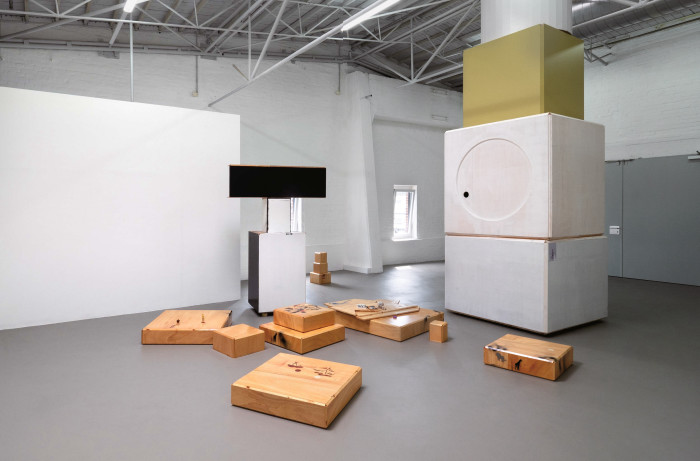
<ggc의 모든 콘텐츠는 저작권법의 보호를 받습니다.>
세부정보
IRONY & IDEALISM
Publisher/ Sul Wonki
Chief Editor/ Choi Eunju
First Edition/ July 31. 2018
Published by/ Gyeonggi Museum of Modern Art
List of Artists/ Ahn Jisan, Bae Young-whan, Björn Dahlem, Gimhongsok, Hwayeon Nam, Michael van Ofen, Manfred Pernice, Yoon Jongsuk
@참여자
-
,